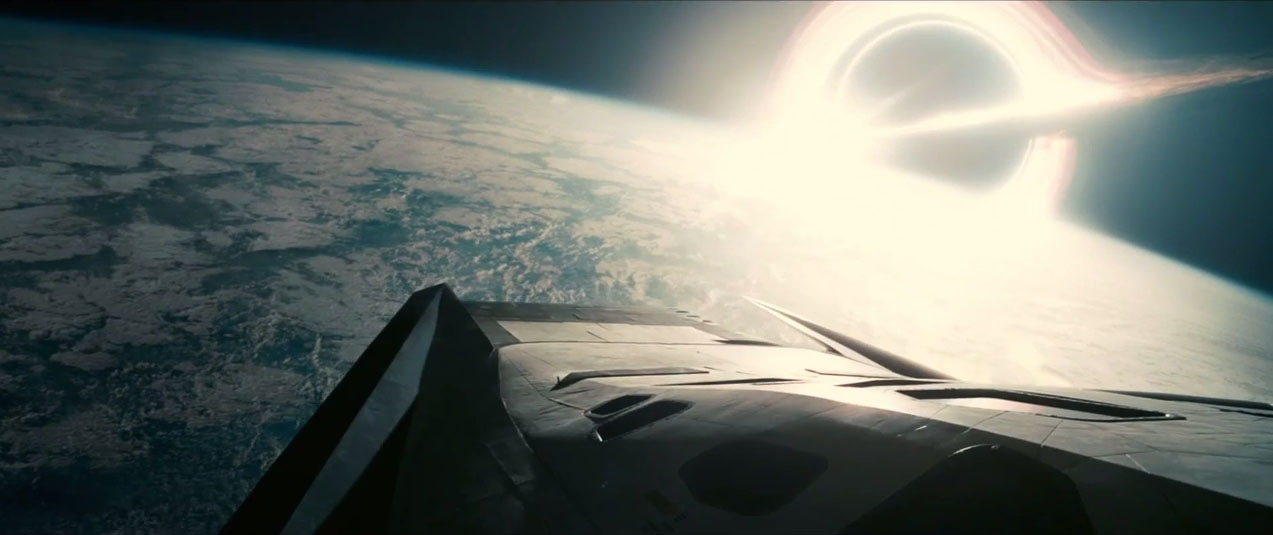
A couple of real-life astronauts gave the stars of the sci-fi epic "Interstellar" the skinny on spaceflight Wednesday (Nov. 5).
NASA astronauts Mike Fincke and Marsha Ivins discussed their off-Earth experiences with "Interstellar" actors Matthew McConaughey, Anne Hathaway and Jessica Chastain during a Google+ Hangout hosted by the Smithsonian's National Air and Space Museum in Washington, D.C. (The actors were onsite, while the astronauts patched in from other locations around the country.)
The event celebrated the Wednesday release of "Interstellar" in select IMAX theaters, including the one at the museum. The movie will be released throughout the United States on Friday (Nov. 7). ['Interstellar' in Pictures: A Space Epic Gallery]
McConaughey asked Fincke, who has spent an American-record 382 days in space on three different missions, what he missed most while orbiting the planet.
"You can see Earth is so beautiful, and you know your family, everyone you love, is down there, and you just wish you could go down for the weekends and spend time with them," Fincke said. "So, I missed my family the most, and I even had a daughter born while I was in space, so it was even more important to come back home safely."
McConaughey later asked Ivins — who flew on five space shuttle missions from 1990 to 2001 and helped prepare Hathaway for her role in "Interstellar" — how spaceflight changed her perspective.
"I think every astronaut who's flown has come back and said similar things," Ivins said. "You notice that there are no borders, and no boundaries that separate the countries. It's just water and dirt and clouds. And when you look out into space and you see this absolute blackness of space with more stars than you can see through the atmosphere here on the ground, you realize the true insignificance of all the things that worry you."
Get the Space.com Newsletter
Breaking space news, the latest updates on rocket launches, skywatching events and more!
Natalie Batalha, mission scientist for NASA's planet-hunting Kepler mission, also gave the actors a crash course in exoplanet science, explaining how she and other researchers are hunting for alien worlds that may be capable of hosting life as we know it.
"We're looking for what we call Goldilocks planets," Batalha said. "So, planets that have about the right size, so we think that they're rocky, and they are in an orbit where they receive just the right amount of energy that would not preclude, at least, the existence of liquid water to pool on the surface."
In its own way, "Interstellar" is also about the search for a Goldilocks planet. In the film, crop failures threaten humanity with extinction on Earth, so the characters played by McConaughey and Hathaway head out, along with a few other pioneers, to find an alien world that may be able to support our species.
The film is directed by Christopher Nolan, who also helmed "Memento," "Inception," and the "Batman" Dark Knight trilogy, among other movies.
Follow Mike Wall on Twitter @michaeldwall and Google+. Follow us @Spacedotcom, Facebook or Google+. Originally published on Space.com.
Join our Space Forums to keep talking space on the latest missions, night sky and more! And if you have a news tip, correction or comment, let us know at: community@space.com.

Michael Wall is a Senior Space Writer with Space.com and joined the team in 2010. He primarily covers exoplanets, spaceflight and military space, but has been known to dabble in the space art beat. His book about the search for alien life, "Out There," was published on Nov. 13, 2018. Before becoming a science writer, Michael worked as a herpetologist and wildlife biologist. He has a Ph.D. in evolutionary biology from the University of Sydney, Australia, a bachelor's degree from the University of Arizona, and a graduate certificate in science writing from the University of California, Santa Cruz. To find out what his latest project is, you can follow Michael on Twitter.
